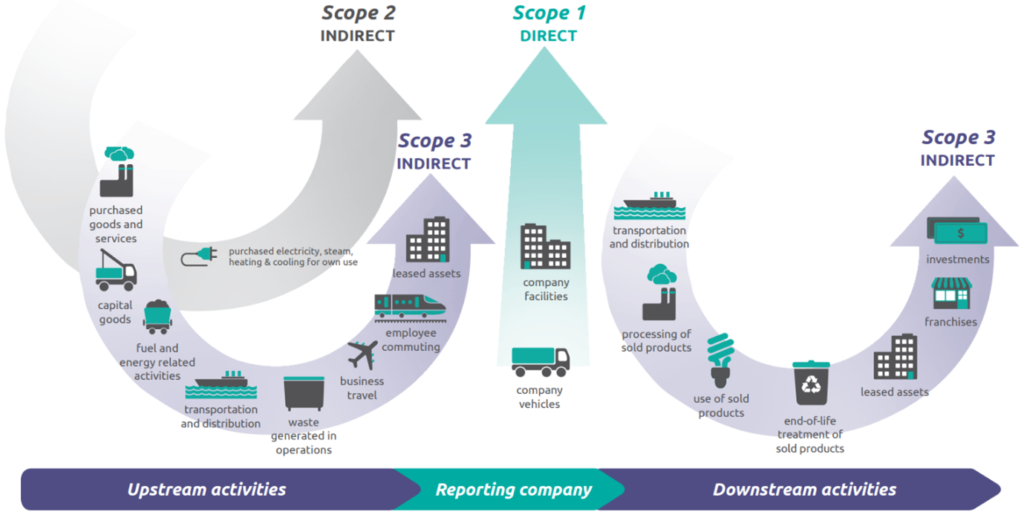Scope 3 emissions calculations are becoming an increasingly common focus area as organisations seek to understand and reduce their overall Greenhouse Gas (GHG) emissions. Whilst measurement and reporting of Scope 1 and 2 emissions (emissions that are owned or controlled by a company) are well established and standard practice for many organisations, Scope 3 measurement and management is still a developing area and at this stage may be considered by many to be more of an art than a science.
Scope 3 emissions are indirect emissions that occur because of an organisation’s activities but are not directly owned or controlled by the organisation. These emissions can occur throughout a company’s value chain, including in the areas of transportation, manufacturing, and waste management. Due to this broad definition, it can be challenging for organisations to understand what they should be measuring and – as the emissions are occurring outside of the organisation’s operational control – even once these emissions sources are identified, collecting accurate data can be a very real challenge.

According to CDP, an emissions reporting benchmark, supply chain emissions are on average 11.4 times higher than operational emissions. To put this another way, on average, supply chain emissions reflect more than 70% of an organisation’s total emissions. Supply chain decarbonisation is being framed as both a significant opportunity to reduce emissions and a hugely underestimated emission source. The Science Based Targets initiative (SBTi), a highly regarded standard for emissions target setting, requires a Scope 3 emissions target for any company whose Scope 3 emissions cover more than 40% of their footprint or total Scope 1, 2 and 3 emissions.
For many organisations Scope 3 emissions will make up the largest proportion of their footprint or total emissions. As a result, there is a growing expectation from stakeholders to measure, manage and reduce Scope 3 emissions. A proactive approach, including identifying an appropriate boundary or the activities included in a Scope 3 calculation and then measuring these emissions, will be helpful preparation for increasing stakeholder and regulatory requirements.
Scope 3 emissions accounting and reporting has been slow to be adopted due to a lack of standard methodologies and difficulty gathering data, however, organisations now have access to innovative tools, technologies, and methodologies that facilitate accurate measurement and reporting of Scope 3 emissions. ITPEnergised has a team of experts who can also provide advice and support on Scope 3 activities, including the identification of appropriate measurement boundaries as well as emissions calculations and modelling.
For more information and to get in touch with our Carbon Services team, please email info@itpenergised.com, and you can download a PDF of this article here.
